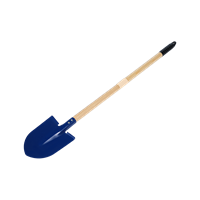Product Consultation
Your email address will not be published. Required fields are marked *
The humble spade, the precise pruner, the trusty trowel—while seemingly universal, Gardening Cultivating Tools are far from uniform across the globe. Their design, materials, and even the philosophy behind their use are deeply embedded in cultural heritage, aesthetic values, and practical needs. From the meticulous craftsmanship of Japan to the robust functionality of Europe and the enduring forms of China, Gardening Cultivating Tools offer a fascinating lens into how societies interact with the earth.
In Japan, the creation and use of Gardening Cultivating Tools is elevated to an art form, deeply intertwined with concepts of harmony, precision, and respect for nature. Japanese tools, such as the hori-hori knife (a versatile digging and cutting tool) or specialized bonsai shears, are renowned for their exceptional craftsmanship. Blacksmiths often employ traditional forging techniques, resulting in incredibly sharp, durable blades that hold their edge superbly. The ergonomics are meticulously considered, ensuring a comfortable, balanced feel that allows for minute control—essential for the detailed work in Japanese gardens. The focus is on perfection in the task: a clean cut for plant health, minimal soil disturbance. Durability is paramount, with high-carbon steel and careful construction meaning these Gardening Cultivating Tools are built to last generations, reflecting a value for longevity and quality. Every curve and angle serves a specific, refined purpose. Using Japanese Gardening Cultivating Tools is often described as an extension of the gardener's hand, enabling a level of detail crucial for their horticultural traditions.
Contrasting this is the legacy of Chinese Gardening Cultivating Tools. While also steeped in ancient tradition, Chinese designs often exhibit distinct, practical forms honed over centuries for efficiency in larger-scale cultivation and specific tasks. Traditional tools like the wide-bladed, slightly curved 'huatiao' (flower shovel) or robust hoes feature strong, often slightly heavier constructions suitable for various soil types encountered across China's diverse landscapes. The design philosophy leans towards versatility and resilience. Many traditional forms persist, demonstrating a continuity of practice. While modern manufacturing exists, there remains an appreciation for tools that follow time-tested, functional shapes. The aesthetic, while present, is often more directly linked to the tool's purpose and robustness compared to the highly refined Japanese aesthetic. These Gardening Cultivating Tools speak to a long history of practical agriculture and ornamental gardening, focusing on effectiveness within established methods.

Moving to Europe and North America, Gardening Cultivating Tools often prioritize functionality, innovation, and adaptability on a broader scale. The emphasis leans heavily on ergonomic design to reduce fatigue—think cushioned grips, lightweight composite materials, and lever-action mechanisms in pruners and loppers. There's a strong drive for efficiency: tools designed to cover more ground quickly or perform multiple tasks (like combination hoe/rakes). Mass production plays a significant role, making a wide variety of Gardening Cultivating Tools widely accessible. Innovation is key, with constant research into new materials (advanced polymers, rust-resistant alloys) and mechanisms (ratchet systems, gear-driven cutting) to enhance power and ease of use. While quality craftsmanship exists (notably in countries like Germany or the UK), the market is dominated by tools designed for practicality, durability under varied conditions, and meeting the needs of a diverse range of gardeners, from hobbyists to professionals. European and American Gardening Cultivating Tools excel at tackling larger plots and diverse tasks with robust efficiency.
This global tapestry of Gardening Cultivating Tools highlights how culture shapes even the fundamental implements. The Japanese hori-hori, with its single, perfectly balanced blade for intricate work, stands apart from a sturdy European digging spade built for turning over vegetable patches, which differs again from a traditional Chinese hoe designed for specific weeding techniques. Each represents an evolved response to local horticultural practices, available materials, and cultural values placed on gardening itself—whether as a spiritual practice, a vital food source, or a popular leisure activity.
The international market for Gardening Cultivating Tools thrives on this diversity. Gardeners worldwide increasingly seek out specialized implements inspired by these different traditions. Japanese pruning tools are coveted globally for their precision, while European ergonomic innovations set industry standards. Chinese manufacturers produce vast quantities of functional tools for everyday use. Understanding these cultural nuances is crucial for manufacturers, retailers, and enthusiasts alike. The Gardening Cultivating Tools are not merely generic objects; they are the refined products of centuries of cultural interaction with the soil. Choosing the right Gardening Cultivating Tools often means connecting with a design philosophy that resonates with one's gardening approach, whether it demands meticulous precision, robust efficiency, or time-honored practicality. As gardening continues to be a global passion, appreciating the cultural heritage embedded in our Gardening Cultivating Tools enriches the very act of cultivation.
Choosing the Right Material: A Guide to Garden Tools Durability and Performance
Dongyang Guorui Industry and Trade Co., Ltd. Elevates Gardening Experience with Premium Handheld Garden Shovel
Your email address will not be published. Required fields are marked *

+86-15381802637

South of Gongye Road and west of Gongye Third Road, Lizhai Industrial Zone, Chengdong Street, Dongyang City, Jinhua City, Zhejiang Province, China

Our goal is to provide the market and customers with customized solutions, whether it is a single product or a complete set of equipment.
If you have anything to consult, you can follow us, we will contact you as soon as possible
Subscribe



